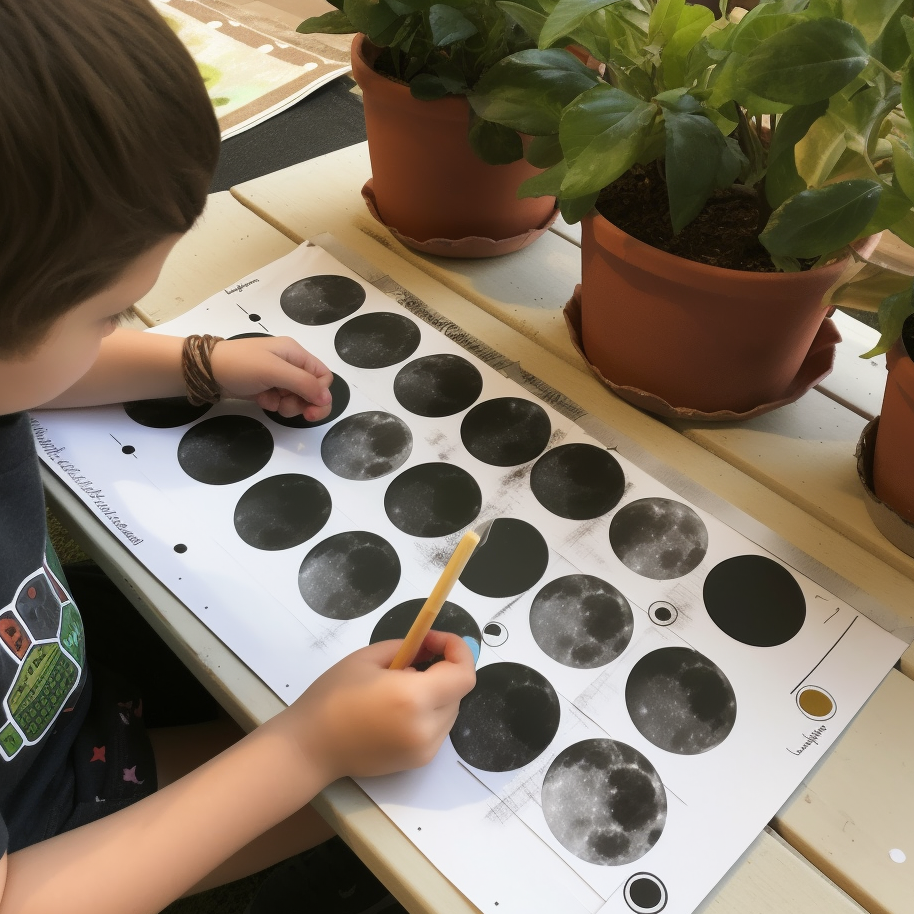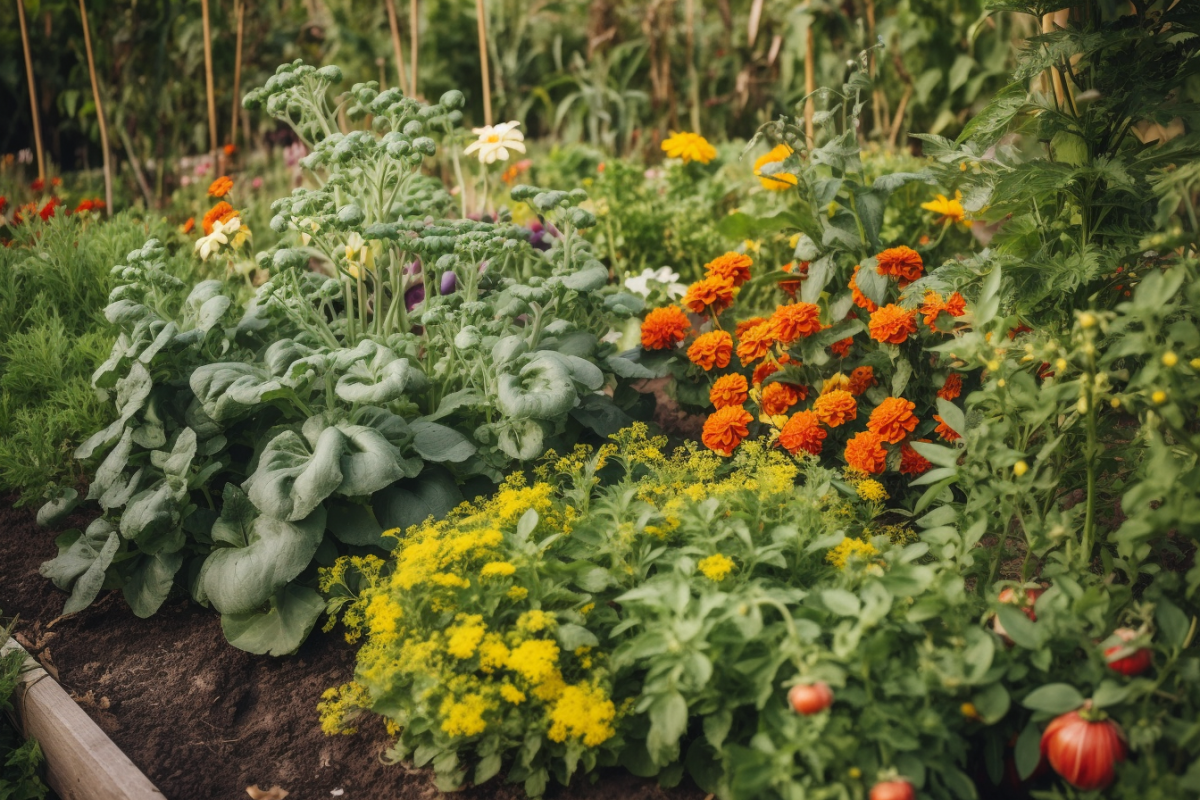When it comes to gardening, timing is everything. Understanding the relationship between the moon phases and the lunar calendar can significantly impact the success of your planting endeavors. The moon’s phases affect the tides, influence natural cycles, and even impact plant growth. In this comprehensive guide, we will explore the fascinating connection between moon phases, lunar calendars, and the art of planting. Whether you’re a seasoned gardener or a novice enthusiast, this article will provide valuable insights and practical tips to maximize your gardening potential.
Understanding the Moon Phases
The moon, our celestial neighbor, plays a vital role in gardening. By understanding the different moon phases and their impact on plant growth, you can harness this natural phenomenon to your advantage.
- New Moon: During the new moon phase, the moon appears completely dark. This period signifies new beginnings and is ideal for planting seeds. The energy from the moon is thought to be focused on the roots, promoting strong and healthy root development.
- Waxing Crescent: As the moon transitions from the new moon to the first quarter, it enters the waxing crescent phase. This phase promotes leafy growth and is an excellent time for transplanting seedlings or cultivating plants that produce leaves and stems.
- First Quarter: The first quarter moon phase is characterized by half of the moon being illuminated. This period is beneficial for crops that bear fruits and seeds, such as tomatoes or peppers. It is also a favorable time for pruning and encouraging healthy growth.
- Waxing Gibbous: As the moon moves towards the full moon, it enters the waxing gibbous phase. This phase is ideal for the rapid growth of above-ground plant parts. It is recommended to focus on activities like fertilizing, harvesting, and pest control during this period.
- Full Moon: The full moon is a phase of heightened energy and illumination. It is believed that during this phase, sap rises, making it a suitable time for harvesting and flower production. Additionally, some gardeners choose to conduct activities like water retention management and applying organic fertilizers during the full moon.
- Waning Gibbous: The waning gibbous phase follows the full moon and is associated with decreasing illumination. This phase is beneficial for activities that aim to reduce above-ground growth, such as pruning, thinning, or harvesting root crops.
- Last Quarter: During the last quarter moon phase, half of the moon is illuminated, but it decreases towards the new moon. This period is ideal for focusing on soil preparation, composting, and applying amendments. It is also an opportune time for weeding, as the energy is directed toward root growth and eliminating unwanted plants.
- Waning Crescent: The waning crescent phase marks the final phase before the new moon. It is a time of rest and regeneration for plants. Gardeners often use this period to reflect, plan, and prepare for the upcoming new moon, ensuring they are ready to take advantage of the next cycle.
Utilizing Lunar Calendars for Gardening Success
Now that we have explored the significance of moon phases, let’s delve into the practical aspect of utilizing lunar calendars for optimal gardening success. A lunar calendar provides a visual representation of moon phases and helps you plan your gardening activities accordingly.
Finding a Reliable Lunar Calendar: Begin by finding a reputable lunar calendar that aligns with your specific location. Ensure that the calendar takes into account the local time zone and includes accurate moon phase predictions.
Mapping Gardening Activities: Once you have your lunar calendar, it’s time to map out your gardening activities based on the moon phases. Use the calendar to identify the ideal timing for activities such as planting, transplanting, pruning, fertilizing, and harvesting. Consider creating a personalized gardening schedule to stay organized and maximize your gardening efforts.

Experimentation and Observation: While lunar calendars provide guidance, it’s essential to remember that every garden is unique. Experiment with different approaches and observe the results. Keep a gardening journal to record your experiences, noting the moon phases and corresponding activities for future reference. Over time, you will develop a deeper understanding of how moon phases affect your specific garden.
Additional Factors: While moon phases are a valuable consideration, it’s important to remember that other factors also influence successful gardening. Factors like soil quality, climate, plant varieties, and local weather conditions play a significant role. Incorporate these factors into your gardening practices in conjunction with lunar calendar guidelines for optimal results.
Lunar Influences on Plant Growth
The moon’s gravitational pull affects various natural phenomena on Earth, including tides and plant growth. While the exact mechanisms are still a subject of scientific study, many gardeners believe that lunar influences can impact plant development. Here are some key theories:
- Gravity Theory: The moon’s gravitational force is believed to influence the movement of fluids, including water and sap, within plants. It is thought that during certain moon phases, this gravitational pull affects the flow of fluids, leading to stronger upward or downward movement. By aligning gardening activities with these phases, gardeners aim to enhance nutrient uptake and overall plant vigor.
- Light Theory: Moonlight, though relatively dim compared to sunlight, is believed to have a subtle influence on plant growth. Some gardeners contend that moonlight stimulates certain metabolic processes, such as photosynthesis, during specific moon phases. As a result, plants may exhibit increased growth and productivity when exposed to moonlight during these phases.
- Moon Phase Theory: Each moon phase is associated with different levels of energy and focus on specific plant parts. By synchronizing gardening tasks with these phases, gardeners aim to optimize plant responses and achieve desired outcomes. While scientific evidence supporting these theories is limited, anecdotal experiences and longstanding traditions have perpetuated the practice of gardening according to moon phases.
Lunar Calendars and Regional Variations
It’s important to note that lunar calendars may vary based on geographic location and cultural traditions. Different regions and gardening communities have developed their own lunar gardening calendars based on local climate, growing seasons, and agricultural practices. When utilizing a lunar calendar, it is recommended to find one that aligns with your specific location for the most accurate predictions and guidance.
Maximizing Moon Phase Gardening Techniques
To fully maximize the benefits of moon phase gardening, consider incorporating the following strategies:
Companion Planting: Combine moon phase gardening with companion planting techniques. Companion plants can help repel pests, improve soil fertility, and provide shade or support to neighboring plants. Aligning companion planting strategies with moon phases can enhance their effectiveness and overall garden health.
Crop Rotation: Implementing crop rotation is an essential practice in sustainable gardening. By rotating crops in sync with favorable moon phases, you can optimize soil health, reduce disease and pest pressure, and improve overall yields.

Microclimate Considerations: While moon phase gardening provides a valuable framework, microclimate variations within your garden may require additional adjustments. Factors such as shading, wind exposure, and moisture levels can impact plant growth differently than lunar influences alone. Regularly assess your garden’s microclimate and make necessary adaptations to ensure optimal growing conditions.
Embracing the Art and Science of Moon Phase Gardening
Moon phase gardening is a blend of ancient wisdom, traditional practices, and a touch of mystery. While scientific evidence may not fully substantiate the claims associated with moon phases, many gardeners find value in aligning their gardening activities with lunar cycles. It fosters a deeper connection with nature and offers a unique perspective on gardening as an art form.
Experiment, observe, and embrace the journey of moon phase gardening. Adapt the techniques to suit your specific garden, and let the moon’s ever-changing presence inspire and guide you in your pursuit of a flourishing garden.
Remember, gardening is an ongoing learning process, and each garden is a canvas for creativity and growth. Enjoy the process, embrace the cycles of the moon, and revel in the beauty and abundance that your garden can bring.
Note: The theories and practices discussed in this article are based on traditional beliefs and anecdotal evidence. Scientific research in this field is ongoing, and individual experiences may vary.
If you are interested in obtaining a detailed Gardening Moon Calendar for the year 2023, please feel free to contact us. Our team will be delighted to provide you with a comprehensive calendar. The calendar will include precise moon phase timings, gardening tips, and suggested activities for each phase, allowing you to optimize your gardening practices throughout the year. Don’t hesitate to reach out to us for your personalized Gardening Moon Calendar 2023.


